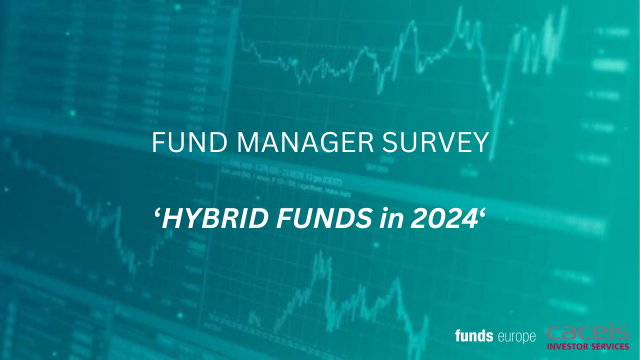The pain points of adapting to a T+1 settlement cycle are now clearer, and market participants will need to collaborate to adapt to the changes, says David Pearson at Torstone Technology.
In February 2023, the US Securities and Exchange Commission (SEC) implemented an amendment to reduce the standard settlement cycle to one business day after the trade date (T+1). The deadline for compliance with this rule change is set for May 28, 2024.
Transitioning to the T+1 settlement cycle offers the clear advantage of accelerated trading, mitigating the effects of market volatility, improving capital utilisation, and reducing operational and settlement risk. Nevertheless, this shift also introduces issues and potential risks for investors and market participants. Global reactions have been polarised in response to the SEC news, with expressions of either shock or endorsement contingent on the affected party’s position within the market ecosystem.
Apprehension among global players
At a recent industry event we held in March to discuss a potential move to T+1 settlement for the UK and EU markets, participants expressed significant reluctance toward the idea of T+1 settlement in a rapid timeframe. Industry stakeholders expressed concern about the potential for higher settlement penalties, as the combination of T+1 and Central Securities Depositories Regulation (CSDR) could lead to increased costs.
Moreover, many in the UK and European markets believe that more groundwork is required before considering a move to T+1, as the higher-than-expected level of settlement failures under the SDR regime shines a light on underperforming operational processes, and the need to invest in technology that improves straight-through processing and automation in order to increase settlement efficiency.
The shift to T+1 may lead to an extended period of heightened settlement failures, accompanied by increased costs associated with CSDR penalties and operational expenses such as overnight funding. Consequently, this could result in greater financial burdens for the investment community, as brokers and custodians may need to pass on a portion of these costs. Furthermore, this could strain relationships between UK banks, brokers, and their clients, potentially causing a loss of business to alternative providers, such as those in Europe.
In the short term, trading activities might also decrease due to the elevated costs, an outcome the UK government is keen to avoid, particularly in the post-Brexit context.
The pain points
The transition to a T+1 settlement cycle presents several challenges for the UK and international markets. One key concern is the potential for increased settlement failures and associated costs. As the time between trading and settlement is reduced, operational issues and ageing legacy systems are likely to contribute to higher failure rates.
In many cases, firms rely on the current T+2 settlement period to rectify issues that may arise due to semi-manual processes and the lack of integration between ageing systems. Reducing this window limits the opportunity for resolving such problems before settlement, exacerbating the risk of failures. These issues stem from discrepancies in trade details, communication breakdowns between counterparties, or delays in confirming and allocating trades.
Some participants also expressed concern that T+1 will expose issues in the Stock Loan Borrow workflows, as the ability to recall loaned stock is not aligned to a T+1 settlement model, and this may lead to settlement breaks when stock cannot be recalled on time. The outcome of this issue could see a reduced willingness of asset owners to offer stock for loan, leading to a liquidity squeeze.
Another of the most pressing issues for international firms dealing with the US move to T+1 is the challenge of navigating time zone differences. With the international nature of the markets, pre-funding, foreign exchange, and liquidity management will need to be carefully considered as North America makes the move to T+1.
International firms may already have a late desk operating in London, coordinating with asset managers in Hong Kong during their night-time hours to confirm the accuracy of every detail for settlement to avoid failures. However, with the transition to T+1, a substantial portion of the time previously allotted for addressing these issues will be eliminated, further intensifying the challenge.
Strategies such as implementing follow-the-sun models or relocating operational hubs may help mitigate these time zone challenges, but this is no mean feat.
Finally, and perhaps unsurprisingly, cost is a major concern for international players. These costs include updating legacy systems to improve efficiency and compatibility, increasing automation to reduce manual processes and mitigate the risk of human error, as well as training staff to adapt to new procedures and technologies.
On the horizon
The US and Canada move to a T+1 settlement cycle presents significant uncertainties and complications for the UK and international markets. While the transition aims to reduce risks associated with market volatility, it is essential for global market participants to address the concerns and challenges that arise in the process.
By understanding the impacts of T+1, developing strategies to navigate the pain points, and investing in post-trade processes, UK and international markets can work towards a successful adaptation to this momentous change in the financial landscape.
Global capital markets are just that: global. Collaboration is absolutely vital – firms should actively engage with industry participants, such as the Bank of England’s UK Accelerated Settlement Taskforce, to gather feedback and contribute to the development of a consensus on the best way forward in shortening the settlement cycle.
*David Pearson is product manager at Torstone Technology.
© 2023 funds europe





